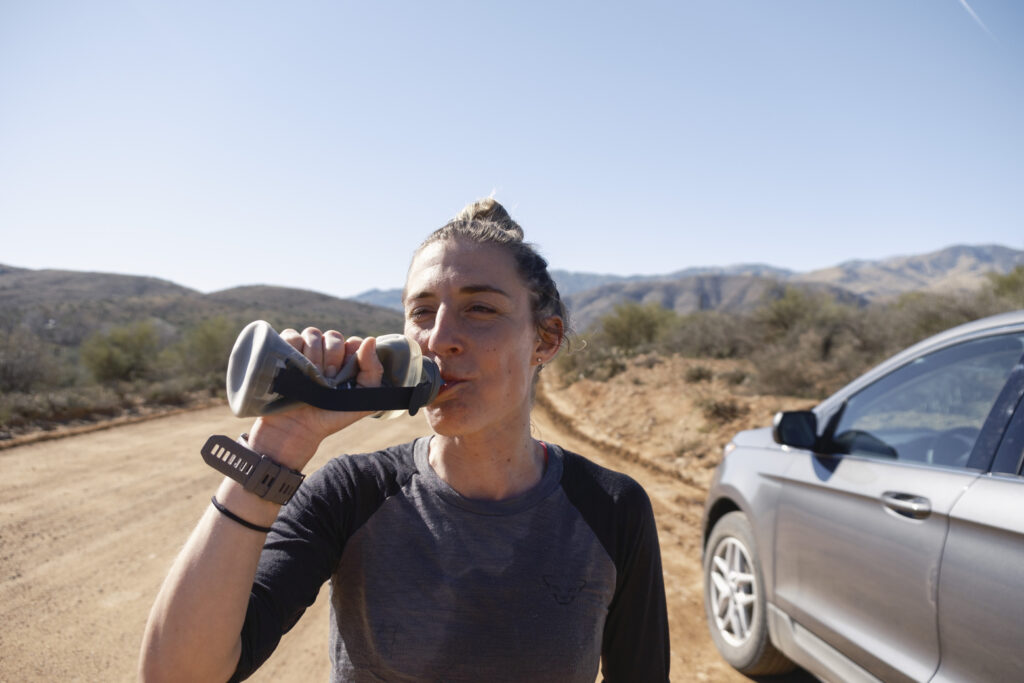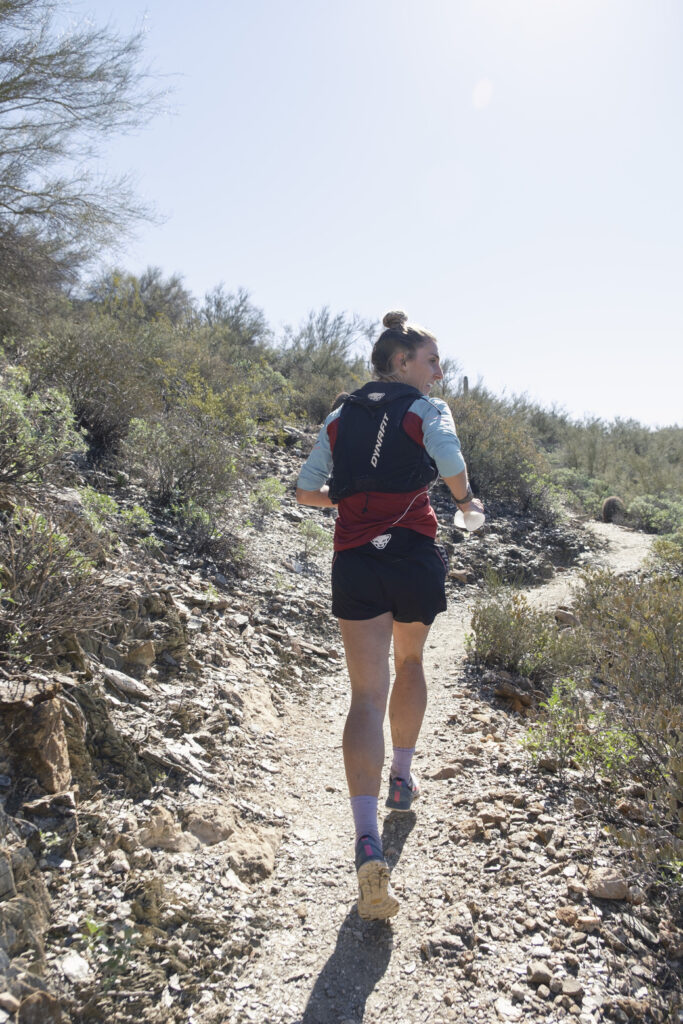The time has finally come for part two of our journey into the latest research (and lack of research) in the field of female athletes, hormones, and nutrition. This article tackles even less traditional, understudied topics like hydration, sleep, supplements, and menopause (yes, I said menopause. Boo!). For most of this article, I’ll be diving back into the review titled “International society of sports nutrition position stand: nutritional concerns of the female athlete” published back in May by lead author Dr. Stacy Simms and a bunch of amazing colleagues (3). In case you missed the part one, you can read it here.
First, I’m going to reiterate what I started with in my last article, because I think it’s important that this gets talked about.
Disclaimer: This article is discussed in terms of biological sex. What I mean by that is that the participants in these studies termed “female” have circulating levels of female sex hormones and were born with an assigned sex of female at birth. This is by no means meant to be exclusionary, however, due to the lack of science on the female sex alone, those who categorize outside of this “neat and tidy” box have not been studied in this space yet. Hopefully, in years to come, the scientific field will also study this area and help us provide knowledge around proper fueling techniques to everyone. This article also discusses a lot of the recommendations around the menstrual cycle, if you do not menstruate, that is okay, the general guidelines are also important to you, and it is even more crucial that you stay in tune with your body and on top of your nutrition!
We will be referencing the phases of the menstrual cycle and the different regulating hormones, most notably progesterone and estrogen, throughout this piece. Below is a handy visual for reference.

Hydration
Something just as important as fueling is hydrating. Yes, I’m looking at you water and electrolytes. Just like with fueling, before we really start to think about our needs across our cycle, we need to first aim to consume adequate water throughout the day (fizzy water counts, don’t worry!) and practice good hydration tactics during exercise. Find a refresher on hydration basics here.
It turns out that both progesterone and estrogen impact how thirsty we feel and how our body handles water and electrolytes. In general, females tend to be at higher risk for dehydration (too low of water) and hyponatremia (low sodium that can be caused by too much water) during exercise than their male counterparts due to their smaller stature and blood volume. Combine this with the fact that there is some evidence indicating that during the luteal phase females may feel thirstier earlier than is necessary and it could easily result in an overcompensation of fluids (4). The fact that some variables related to hydration may change based on menstrual cycle phase comes as no surprise as someone who menstruates, I feel the need to pee more often during certain parts of my cycle and feel the occasional menstrual bloat. Estrogen and progesterone both increase sodium reabsorption, so some females may experience this in the form of bloating. However, many studies looking at the specific menstrual cycle phases impact on these parameters have shown conflicting results, which makes racing these long ultramarathon events with a proper hydration plan even more important.

Super sleeper
Getting enough sleep is arguably one of the most important things we can do for ourselves as athletes.
Part one ended with a section on protein, and while we all tend to think of protein as something to get in during the day and after workouts, it turns out that consuming protein before bed, especially on days with workouts later in evening, has shown to have a potential positive impact on muscle soreness, recovery, and muscle protein synthesis. While the data is limited, it has me thinking, what else is impacting sleep and our body’s ability to recover? Why do we spend some nights tossing and turning more than others, or waking up feeling like we are in a haze?
Sleep can be disrupted by many things including stress, intense exercise, late meals, or different phases of the cycle. This is highly variable for athletes, but if you are like me, and you are burning up during your luteal phase, you know what I’m talking about. I never sleep quite as well in the week leading up to my period and my Oura ring lets me know it. Increased body temperature may play a role in this perceived change in sleep quality and can leave us feeling unrested in the morning. I try to always keep my room cool during this time of the month and start off my bedtime routine feeling as cool as I can. Counterintuitively, a hot shower before bed that promotes vasodilation can help with this.
Suspecting supplements
In the review article, they touch on a lot of different supplements. For brevity, I do not plan to cover them all. A lot of the supplements discussed do not have a lot of research to back them up, so I will not talk about them here. If more research comes out, I’ll revisit them for you all. In a nutshell, the responses are highly variable between women, and there may be impacts of menstrual cycle phase and menopause on how you respond to each! For now, use them if you choose to and take notes around how you feel after their use in relation to your menstrual phase, hormone levels, performance, and/or menopause status. Today we are going to touch on caffeine and iron.
There is nothing better than a hot cup of coffee in the morning, but aside from that comforting morning ritual, how does it impact performance? Caffeine has been shown to improve performance in both males and females. Unfortunately for me, its effects may be less pronounced in habitual users and it dependent on how you metabolize caffeine (genetically speaking). During the luteal phase, caffeine metabolism seems to slow down, which means you might feel the effects for longer. Pair this with heightened body temperature and increased resting metabolic rate and we may have an interesting combination. It may be helpful to play around with the timing and amount of caffeine ingested during this phase. You might notice changes in levels of alertness, afternoon crashing, or trouble falling asleep – so see what best works for you.
Iron, oh how we all are so intimately familiar with this supplement. Iron is an endurance athlete’s best friend (most of the time) because our sport not only demands robust red blood cells but also puts us at risk for destroying them before their expiration date (via foot strike hemolysis and damage to our guts due to hypoperfusion). This puts us in a place where we can end up with a with a shortage of iron, ferritin (the protein needed to transport oxygen to our muscles), or both. While female athletes are more likely to suffer from anemia than males for several reasons (including but not limited to monthly bleeding), there may also be differences across the menstrual cycle. During the luteal phase when progesterone is high, our body releases more hepcidin (a hormone that blocks iron absorption, which is normally protective), which could make taking oral iron less effective than during the follicular and ovulatory phases. While this is interesting, and something we should be keeping in mind, like most things in this space, more research is still warranted.
The review also touched on beta alanine, nitrates, and creatine. For brevity, I won’t cover them here, but if they are of interest to you, go check them out! Again, the research is still rather limited, but these supplements have shown some promise at improving various performance metrics in female athletes.

An Almost There TL:DR
Okay, so I know that was a lot. To review:
Hydration
- Always aim to meet daily fluid demands.
- Female athletes may be at higher risk of dehydration or hyponatremia than males, so creating race-day hydration plans can be helpful.
- During the luteal phase of the cycle, females may feel thirsty earlier than they need to be which could result in an overcompensation of symptoms.
- Female sex hormones impact fluid and sodium retention, then may lead to some of your menstrual symptoms.
Sleep
- Sleep is extremely important in recovery and muscle repair.
- The luteal phase may negatively impact sleep quality, stay cool.
Iron
- Supplementing with iron may be more effective during the follicular phase when compared to the luteal phase.
Caffeine
- There is some evidence that caffeine and its downstream impacts may have a prolonged effect during the luteal phase. Experiment!
Menopause Masters
One of the “scary”, less-studied areas of female physiology is menopause. In fact, it is so understudied and underdiscussed, that in one study, they found that >90% of females were never taught about it in school and the majority did not feel informed even while going through it. (1) Sound familiar? The unknown is scary and unfortunately, this stat did not surprise me. I get a lot of questions from athletes and the community around menopause. While I am happy to see an increase in the number of studies in this space, it is still quite hard to give individuals going through menopause proper advice.
Some of the topics this review discusses in relation to menopause are:
Fluid Regulation & Hydration
- Aging may decrease the thirst response during exercise.
- Excretion of water slows down with age, which makes hyponatremia more likely than younger women.
Protein Ingestion
- It is recommended that peri- and post-menopausal individuals aim for the upper range of protein ingestion (~2.2g/kg*day).
- Critically timing of protein pre and post exercise becomes more important during this time.
Glucose Ingestion
- Due to a heightened risk for insulin resistance, it is important that post exercise feeding occur as close to the end of the exercise as possible.
Iron
- Postmenopausal women may have delayed hepcidin regulation post exercise, which makes supplementing well before or after exercise more important for absorption.
I plan to tackle a more in-depth analysis of the current research and lack of research in the menopause space in part three of this series.
In general, a lot more research needs to be done to fully understand the impact of female cyclical sex hormones on nutritional needs and metabolism. While this review provided a lot of recommendations, and a great summary of the current research, it is best to work with your health care provider and a registered dietician to really take a holistic view of your health and hormone levels especially during the menopausal years. Tracking your training, menstrual cycle phase (if you menstruate), sleep, nutrition, and how you feel can be an invaluable tool when working with a care team to better understand your unique physiology and can give insight into how you are impacted by your cycle. While not an exciting answer or conclusion, until we know more, this is our best way to best meet and understand our individual needs.
References
- Harper, Joyce C et al. “An online survey of perimenopausal women to determine their attitudes and knowledge of the menopause.” Women’s health (London, England) vol. 18 (2022): 17455057221106890. doi:10.1177/17455057221106890
- Ray, Laurie. “Clue: Period and Ovulation Tracker for iPhone and Android.” Helloclue.com, Clue, 2019, helloclue.com/articles/cycle-a-z/the-menstrual-cycle-more-than-just-the-period.
- Sims, Stacy T et al. “International society of sports nutrition position stand: nutritional concerns of the female athlete.” Journal of the International Society of Sports Nutrition vol. 20,1 (2023): 2204066. doi:10.1080/15502783.2023.2204066 https://www.ncbi.nlm.nih.gov/pmc/articles/PMC10210857/
- Stachenfeld, Nina S. “Sex hormone effects on body fluid regulation.” Exercise and sport sciences reviews vol. 36,3 (2008): 152-9. doi:10.1097/JES.0b013e31817be928
